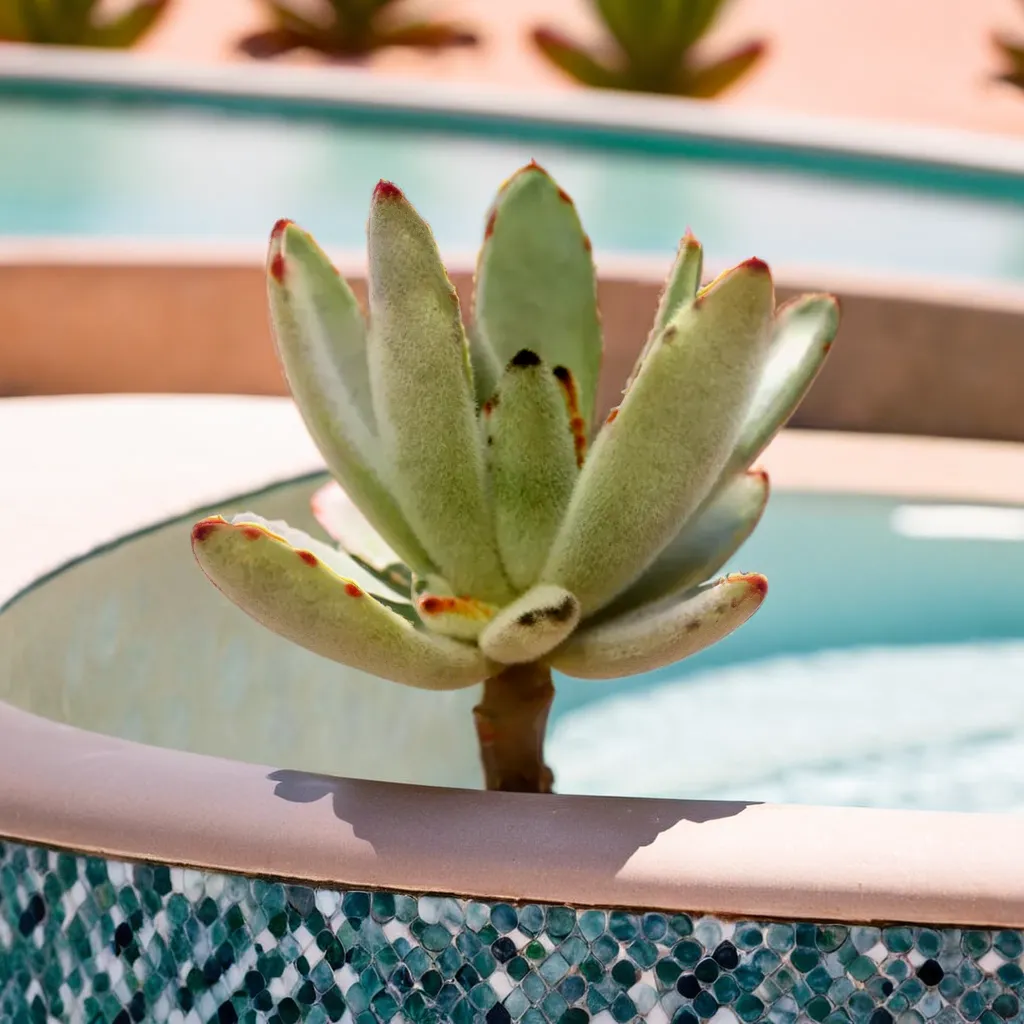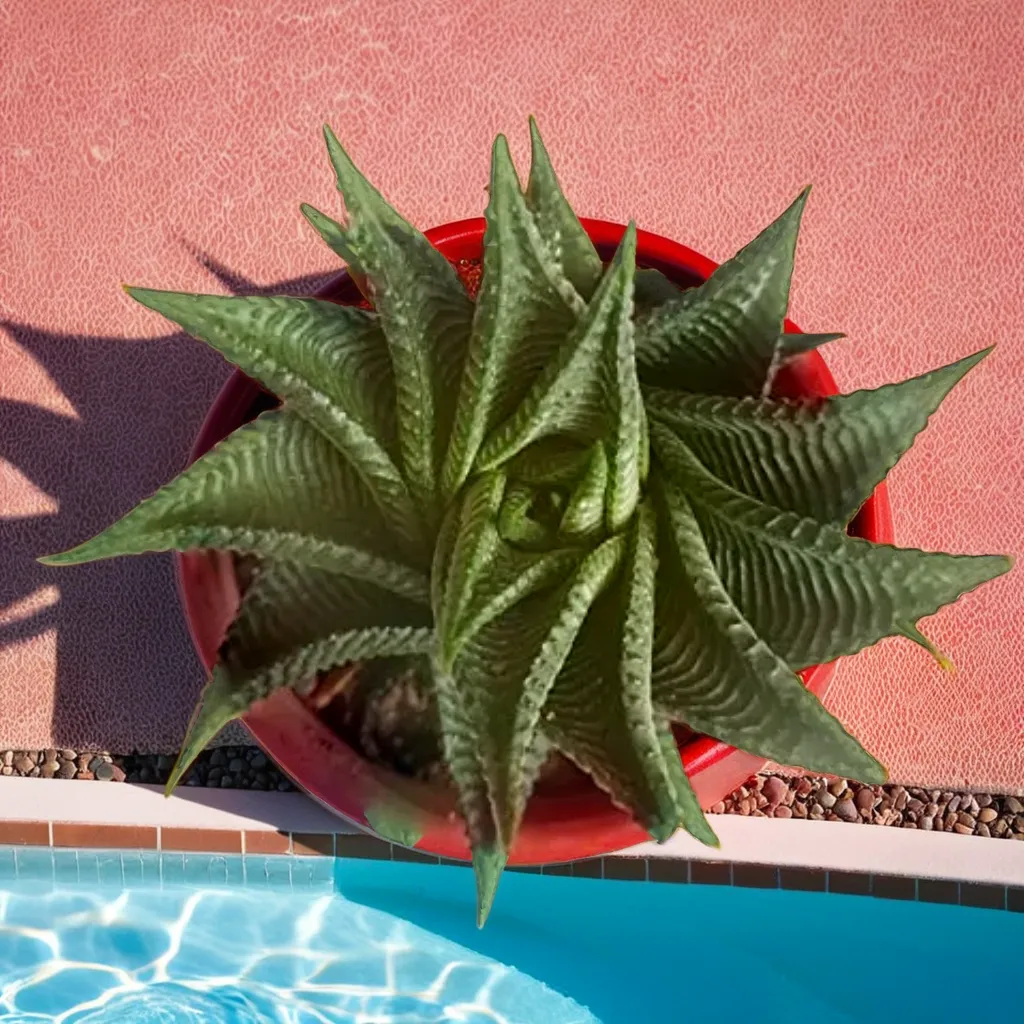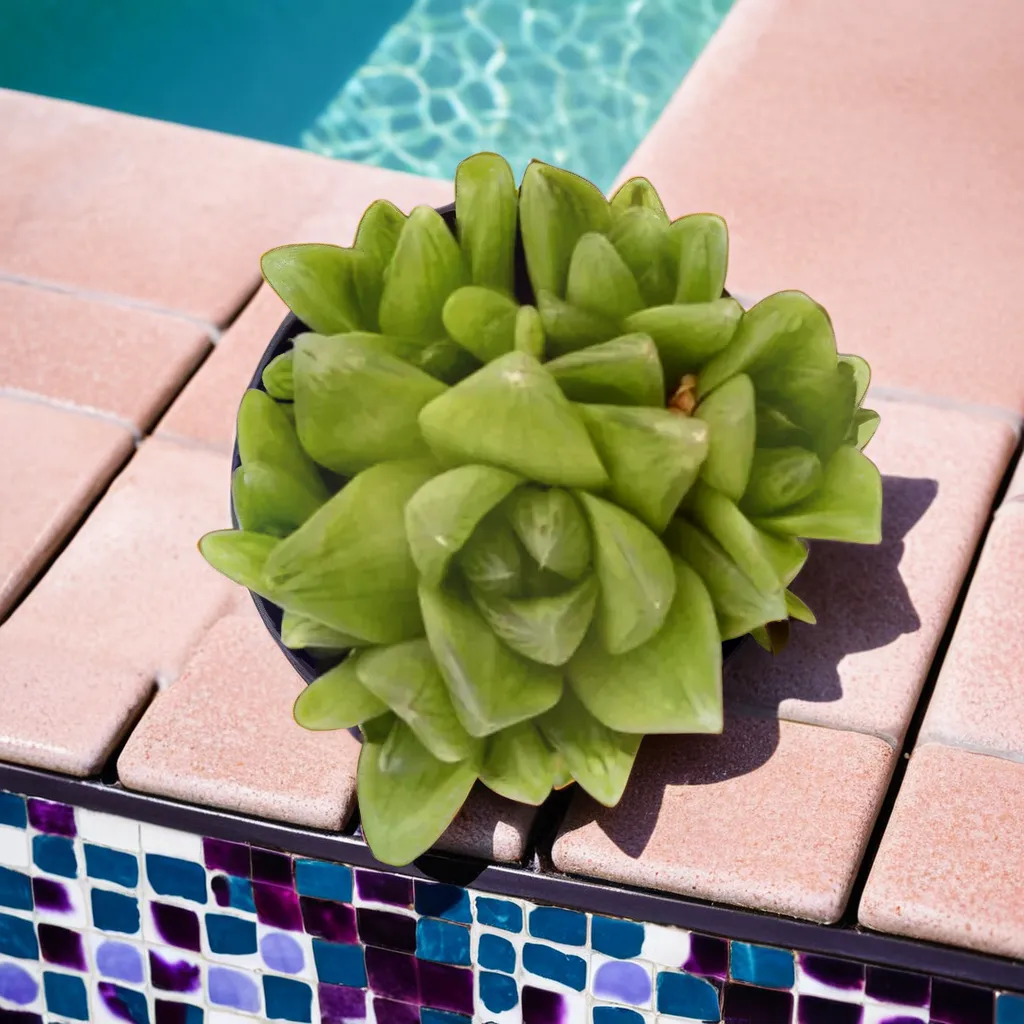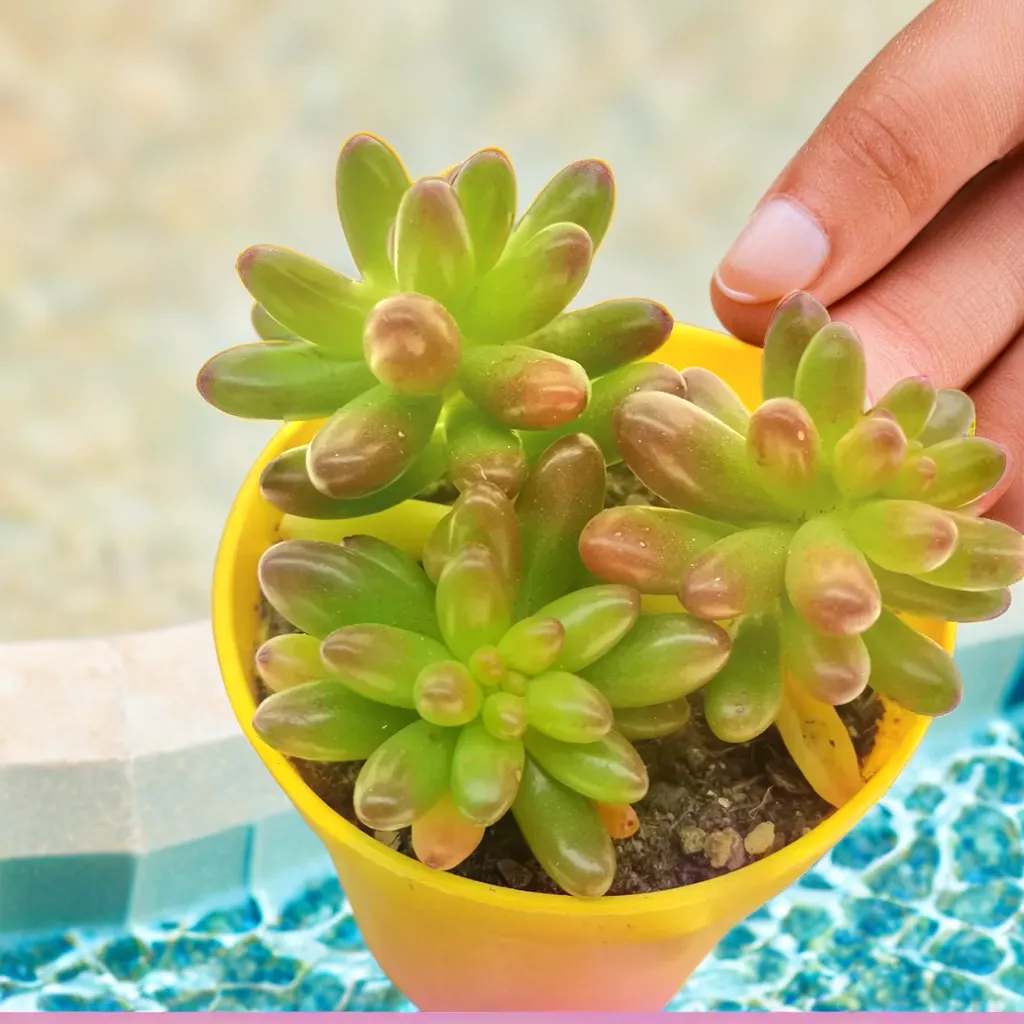Description
Sedum rubrotinctum, commonly known as “Jelly Bean Plant” or “Pork and Beans,” is a popular succulent with plump, jelly bean-like leaves that change color depending on the light conditions.
how to grow and care for Sedum rubrotinctum:
- Light requirements: Sedum rubrotinctum thrives in bright, indirect sunlight. Place it in a location where it can receive at least 4-6 hours of indirect sunlight per day. If growing indoors, a south or west-facing window with bright light is ideal. Avoid exposing the plant to intense, direct sunlight for extended periods, as it can scorch the leaves.
- Temperature and humidity: Sedum rubrotinctum prefers average to warm temperatures between 60-80°F (15-27°C). It can tolerate slightly cooler temperatures but may need protection from frost. The plant is adapted to low humidity environments and doesn’t require high humidity levels.
- Soil and potting: Use a well-draining succulent or cactus potting mix for Sedum rubrotinctum. You can also create your own mix by combining regular potting soil with perlite or coarse sand. Ensure the pot has drainage holes to prevent waterlogging.
- Watering: Sedum rubrotinctum is a drought-tolerant succulent and has low water requirements. Allow the soil to dry out almost completely between waterings. Water the plant thoroughly, ensuring the excess water drains out completely. During the active growing season (spring and summer), water the plant sparingly, approximately once every two weeks. Reduce watering frequency in the winter months when the plant goes into a period of rest.
- Fertilization: Sedum rubrotinctum has low fertilizer requirements. During the active growing season, you can feed it with a balanced, water-soluble fertilizer formulated for succulents or cacti. Dilute the fertilizer to half strength and apply it once a month. Avoid fertilizing during the winter dormant period.
- Propagation: Sedum rubrotinctum can be propagated through stem cuttings or leaf cuttings. For stem cuttings, take a healthy stem cutting and let it dry for a few days until the cut end calluses. Then, plant the cutting in well-draining soil and keep it lightly moist until roots develop. Leaf cuttings can also be taken by gently pulling off a leaf and allowing it to dry and callus. Plant the leaf in well-draining soil and mist it occasionally until new plantlets emerge.
- Pruning and grooming: Sedum rubrotinctum doesn’t require extensive pruning. However, you can trim back any excessively long or leggy stems to maintain a more compact shape. You can also remove any yellowed or damaged leaves. Gently remove any dust or debris from the leaves using a soft brush or cloth.
- Pests and diseases: Sedum rubrotinctum is generally resistant to pests and diseases. However, it can occasionally be susceptible to mealybugs or spider mites. Regularly inspect the plant for any signs of infestation, such as tiny webs or cottony clusters. If pests are present, treat them with insecticidal soap or use a cotton swab dipped in rubbing alcohol to remove them.
By following these care guidelines, you can enjoy the unique appearance and easy-going nature of Sedum rubrotinctum as it grows and thrives as a lovely succulent plant.
You can also visit our store to buy succulents online , buy succulent planters, buy fertilizers online with various types of indoor plants and hardy succulents . You can refer to our informational site for more details about plant varieties.Click here for agricultural knowledge information.






